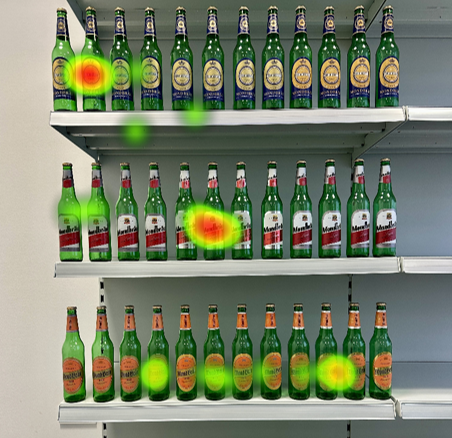Beyond the Shelf: consumer panel findings on packaging perceptions
Packaging is a critical marketing tool that can influence consumer purchase decisions. A well-designed package can capture attention, communicate brand values, and create a positive impression of the product.
In today's competitive marketplace, brands are constantly looking for ways to make their products stand out. Metallized labels are one way to add a touch of luxury and sophistication to product packaging.
To investigate the impact of metallized labels on consumer perception and purchase intent, Nissha Metallizing Solutions, in collaboration with SenseCatch, recently conducted a consumer panel in Berlin, Germany. The study focused on the beer market, and four different fake beer brands were created for the study. For each brand, three bottles with three different label materials were placed on the shelf. The label materials were:
- Metallized paper
- White paper with metallic ink
- White paper with standard ink
This controlled study aimed to explore how different label materials influenced consumer behavior across key stages of the purchasing journey, providing valuable insights into the power of packaging.

Study design
The consumer panel was meticulously designed to assess the role of metallized labels throughout the entire consumer journey, recognizing that packaging acts as a “silent salesman” influencing purchase decisions from the first glance.
- Shelf Observation: To simulate a realistic shopping environment, a mock retail shelf was constructed in the Berlin testing facility. Participants were asked to browse as they normally would, while eye-tracking technology precisely measured their visual attention and fixations on the various beer bottle labels. This stage aimed to quantify the “eye-catching” ability of metallized labels and their immediate influence on initial product selection.
- Interaction with Bottles: Following shelf observation, participants were allowed to handle and examine the bottles. This stage focused on capturing tactile experiences and detailed visual inspections, using facial coding to analyze emotional responses such as liking, preference, and perceived brand image. This stage delved deeper into how the label’s aesthetic and physical properties influenced consumer perception.
- Tasting Experience: In the final stage, participants tasted the beers. This stage explored whether visual cues from the packaging could alter the sensory experience, as suggested by research suggesting that packaging aesthetics can influence perceived taste. Post-tasting interviews were conducted to gather qualitative data on participants’ opinions and expectations, providing insights into how the labels shaped their overall product experience.
To comprehensively capture both conscious and unconscious responses, the study employed a multi-faceted approach. Eye-tracking technology provided objective data on visual attention, while facial coding revealed subtle emotional reactions. In-depth interviews allowed researchers to probe participants’ rationales and expectations, providing a holistic understanding of how metallized labels influenced their perceptions and decisions.
Key findings
Compelling results emerged from the consumer panel, demonstrating the significant impact of metallized labels on consumer perception and purchase intent.

Here’s a glimpse into some of the key findings:
- Capturing Attention: Metallized labels proved highly effective at capturing consumer attention right on the shelf. The study revealed that metallized surfaces were more likely to draw the eye, even passively, suggesting a strong ability to break through the visual clutter of a retail environment.
- Influencing Purchase Intent: The consumer panel also indicated a positive correlation between metallized labels and purchase intent. Consumers expressed a greater willingness to purchase products featuring metallized labels, suggesting that the visual appeal translated into a tangible impact on buying decisions.
- Enhancing Brand Perception: Packaging is a powerful tool in shaping how consumers perceive a brand. The study revealed that visually striking labels contributed to stronger brand differentiation and recognition. Consumers associated these premium-looking labels with a brand’s commitment to quality and sophistication, reinforcing a sense of trust and desirability.
- Quality Product Perception: Beyond mere attention, these labels shaped consumers’ perception of the product itself. Participants consistently associated metallized labels with premium qualities, envisioning the product as higher quality and more suitable for special occasions.
- Challenging Sustainability Assumptions: Interestingly, the research challenged the assumption that metallized labels are perceived as less sustainable. In fact, some participants perceived white paper with standard ink as appearing "cheap" and "less eco-friendly" due to the perceived lower quality of pigments.
These findings provide a strong indication of the power of metallized labels to influence consumer behavior. But there's much more to uncover. Stay tuned for upcoming articles where we'll explore each of these areas in greater detail, providing deeper insights and data from our latest consumer panel.